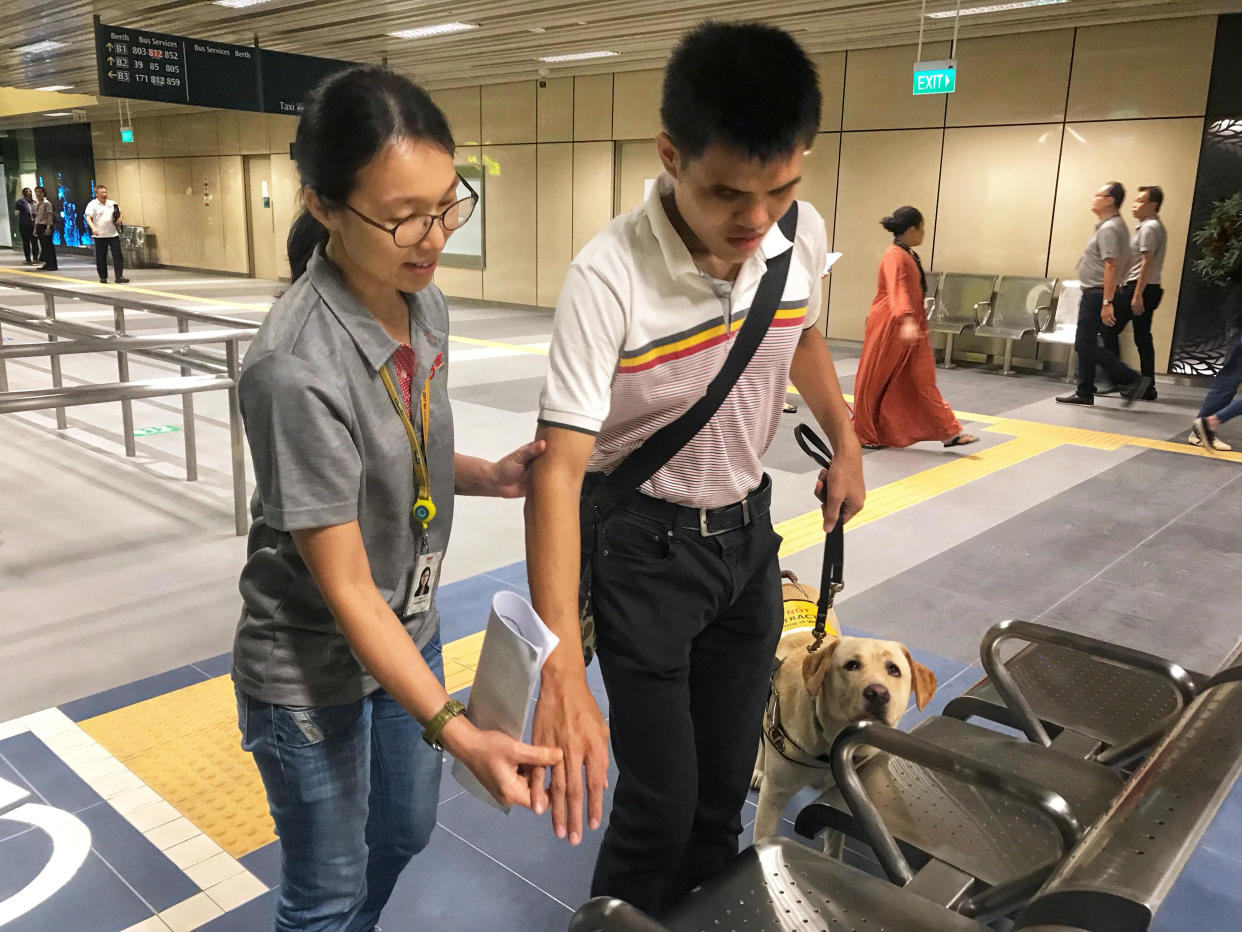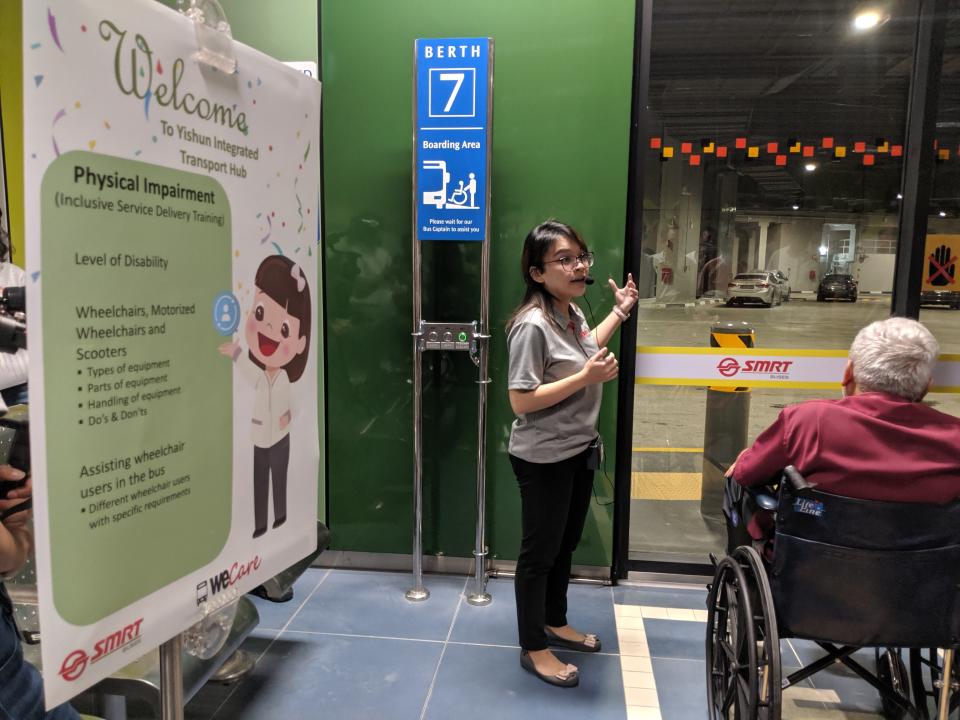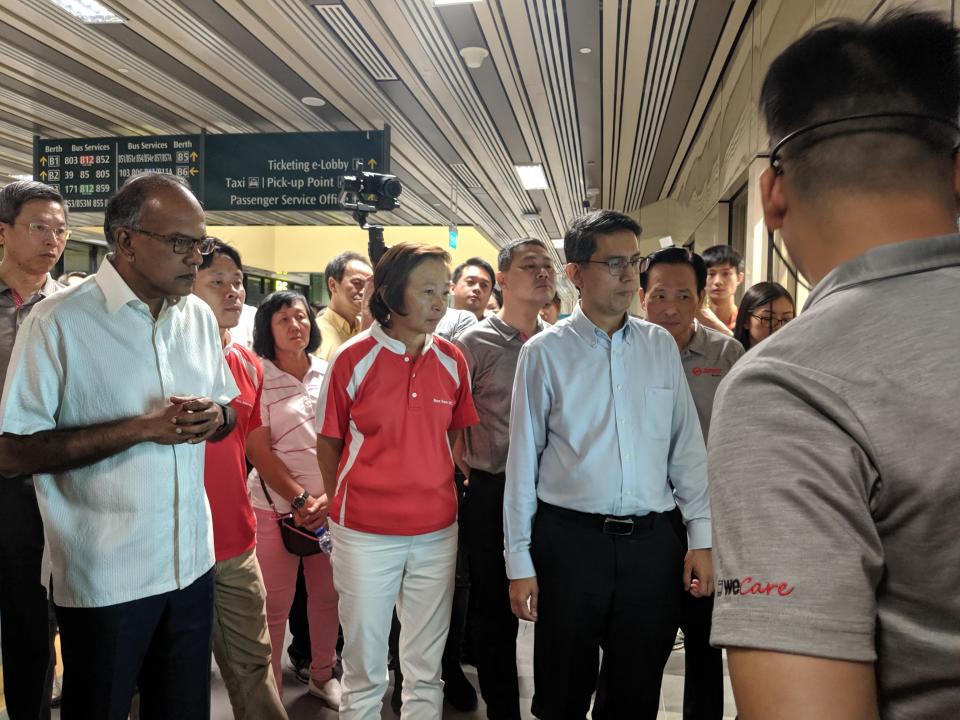Staff at new Yishun transport hub to be trained for better support to those with disabilities, dementia

SINGAPORE — Transport operator SMRT on Friday (23 August) signed an agreement with five partner agencies to provide its staff with relevant training, as part of its efforts to better support those with disabilities and dementia.
So far, five SMRT Buses staff have been taught by three of the agencies – Agency for Integrated Care (AIC), Guide Dogs Singapore and Handicaps Welfare Association – on how to approach and help those with disabilities or dementia during their commute.
These staff trainers have moved on to impart their skills to a first batch of 40 colleagues at the upcoming Yishun Integrated Transport Hub, where the Memorandum of Understanding was signed on Friday.
"As an inclusive public transport service provider, we want all commuters, especially the elderly and those with special needs, to feel safe and comfortable when they travel in our network," said SMRT Roads president Tan Kian Heong.
First dedicated inclusive service training centre
The Yishun transport hub, to be open to the public on 8 September, will be SMRT’s first dedicated inclusive service training centre, where all frontline SMRT Buses employees, such as bus captains and interchange staff, will eventually be schooled.
It is also the first bus interchange to be appointed by the AIC as a resource centre for caregivers of dementia patients, as well as a space where the public can bring missing or lost persons with dementia.
Trained SMRT staff will calm the latter down and contact their next-of-kin.
SMRT Buses trainer Eugene Lee, 39, said that the training will allow his colleagues to aid not just those with dementia but also others with disabilities more efficiently.

He and the four other trainers are currently being taught by the Singapore Association of the Visually Handicapped (SAVH), and will also undergo further dementia-related training by the Alzheimer’s Disease Association in the upcoming months.
Lee said that, prior to his training at the SAVH, he and other SMRT staff members would be unsure of how to properly guide the visually-imparted commuters.
“We will be trained (by the SAVH) on how to guide them along by using the back of our palm (on their hand) – they will search for our elbow. We are to be one step ahead of them and bring them along,” he explained.
Inclusive features at Yishun transport hub
The Yishun Integrated Transport Hub will also include other inclusive features, such as graduated kerb edges for those on wheelchairs, assistive panels located near the priority queue areas for those who require aid to board the bus, and a dedicated quiet room for those with special needs.
These additions are in line with the Transport Masterplan 2040, released in May, which outlined goals for a more inclusive transport system.

Basheer Ahmad, 42, a wheelchair user for over a decade, noted that the assistive panels will mean that the Yishun resident will not have to physically go up to a bus driver for assistance to board the vehicle.
Better still, his family members will not have to wait with him to alert the driver and then rejoin the queue for the bus.
“With this, my family members and I don’t need to queue separately for the same bus service,” said Basheer.
Home Affairs and Law Minister K Shanmugam, who attended the event with fellow Nee Soon GRC Members of Parliament, said "a lot of thought" had gone into designing the hub to be more inclusive.
“People recognise that this is a very different town from 10 years ago, with more developments coming (that) greatly enhances the quality of life in Yishun,” he added.

Related stories:
Transport Masterplan 2040: New MRT line for north, northeast Singapore
Transport Masterplan 2040: Advisory panel releases 9 recommendations


